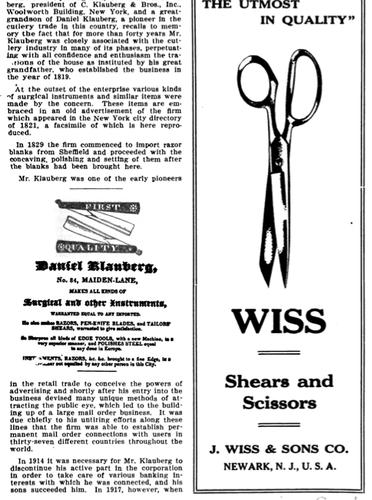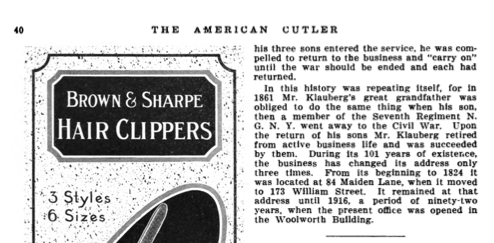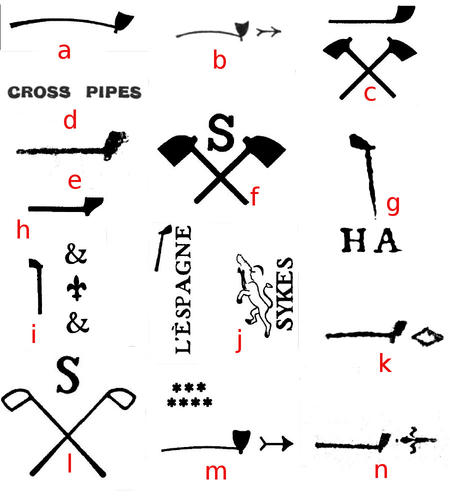Results 1 to 10 of 19
Threaded View
-
02-26-2013, 04:01 PM #1
 Some lesser known and unknown makers
Some lesser known and unknown makers
I know there's already a razor club for this, but thought I'd start a post here with some interesting razors I have. I've been talking with Zak a lot about some of these; some are known but uncommon, some have stumped us so far. Some came from a recent purchase one degree away from Robert Doyle, and a couple have Lummus markings on them.
First up: D. Klauberg New York. I believe it is this family, a Daniel Klauberg (https://sites.google.com/site/thekla...ily-in-america).

Some history on Daniel Klauberg, who started in 1819 in New York, the origins of the firm C. Klauberg. From the article, apparently he made goods starting in 1819, moved to a new building in 1824, and was importing sheffield blanks from 1829:


Further interesting, an article in which Daniel in 1824 talks about making a few razors and other goods from a new American steel to test it out. From what I can tell he had been using English steel up until this time (and probably after):

Next up a Boston razor, Wells W. Aye, 304 Washington St.

In my very limited search, nothing so far on this one, but it should be fairly straightforward to trace. Next up, a Richard Reese. Very little information on this one. Zak is currently looking into a number of different American Reeses who were blacksmiths. Not sure if American or English.

And an early stubtail marked with a hatchet (I'm not sure if it's a hatchet or pipe but it looks more like the former to me) and the number 3. I haven't done an exhaustive search of the early maker marks, but so far nothing.

Here are some common pipe marks for reference:
Feel free to post more pictures of rare or unknown makers marks, I'm interested. And if anyone has any info on these, chime in. More to come...
-
The Following 3 Users Say Thank You to ScienceGuy For This Useful Post:
Geezer (02-28-2013), Martin103 (02-26-2013), str8fencer (02-26-2013)


 53Likes
53Likes LinkBack URL
LinkBack URL About LinkBacks
About LinkBacks







 Reply With Quote
Reply With Quote